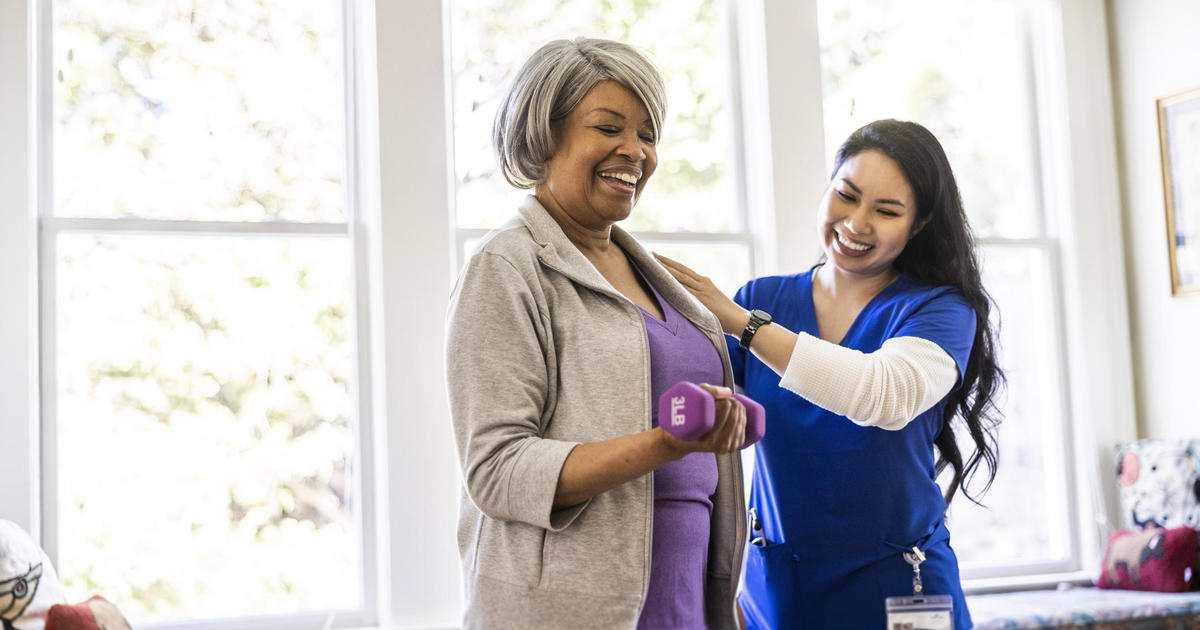Robots: Now coming to a workplace near you
"Digit" the robot can balance on one foot, navigate obstacles and fold itself to fit into the back of a car. One other thing — Digit can also use its arms to carry and deliver packages straight to your door, and even ask for help if a problem occurs along the way.
No wonder that a big company like automaker Ford has purchased two of the robots to explore how the technology, developed by Agility Robotics and presented at the Consumer Electronics Show in Las Vegas this week, might be used in a warehouse setting and for delivering goods. Indeed, an increasingly sophisticated generation of robots is proving capable of doing a wide range of jobs, from bringing you toilet paper to flipping burgers and performing surgery.
Most experts say robots will increasingly complement flesh-and-blood workers by taking over certain tasks, rather than replacing them wholesale. Others fear that widespread automation will kill jobs. But what's clear is that robots are marching into the American workplace. Here are just a few of the jobs and industries experts say could be transformed along the way.
Changing routines
Robots excel at straightforward, repetitive tasks that tend to be mundane and boring for humans. By contrast, they struggle with more complex work where conditions often change or emotional intelligence is required.
"The easiest, most repetitive and routine tasks are the most likely to be automated," said Pramod Khargoneker, a future of work expert who is vice chancellor for research at the University of California at Irvine. "Robots have a harder time doing physical work in an environment that is unruly or unpredictable."
Tasks that robots tend to perform more efficiently than humans include administrative support, data entry and other jobs that require little-to-no sophisticated interaction with people. For example, so-called chat bots are adept at responding to customer service inquiries based on patterns of exchanges. They can schedule meetings, answer questions and address other cut-and-dried matters.
"We are trusting tech more and more to solve our problems and are relying less on humans," said Dan Schawbel, author of "Back to Human," which explores the use of tech in the workplace.
Food for thought
The food industry is also ripe for automation because its tasks are mostly physical and repetitive. "They are not very sophisticated and you can design the environment so that the work can be repetitively performed. Those types of things are subject to being automated," Khargoneker said.
At Cafe X shops in San Francisco and San Jose, California, for example, robot baristas make and serve coffee. And California restaurant chain Caliburger is testing an aptly named robot, "Flippy," which costs up to $100,000 and which can flip 2,000 burgers a day, at one location.
Wielding the scalpel
Health care is another industry turning to robots. Johns Hopkins Medicine uses robotic-assisted technology that gives doctors better control and more precise vision during procedures to treat pancreatic cancer endometriosis, kidney disorders and other conditions. Surgeons maneuver a four-armed surgical robot that can make smaller incisions, helping patients recover faster.
"Even laser eye surgery is getting to a point where it's almost automated," said Ray Wang, founder of technology research firm Constellation Research. "These and other common procedures are being done with better accuracy than humans."
Robots could also cut down on wasted spending in health care, which ranges as high as $935 billion per year — more than the annual federal defense budget. For instance, intelligent robots could take notes, deliver patient information and even suggest diagnoses.
"Right now, we go to an office, the doctor is busy inputting data in electronic health records, and there is not enough time between the doctor and the patient for a real interaction," Khargoneker said. "It's possible to imagine that AI will free up a doctor to be a doctor."
The ability of robots to do new kinds of work will expand how people interact with them both on the job and in other settings.
"Robots are no longer restricted or constrained to environments in which they interact only with other machines," said Meera Sampath, associate vice chancellor for research at the State University of New York. "They are starting to be used alongside people in both business settings and social environments. It's the beginning of a longer-term trend where they are moving from factory floors to interacting with people in different contexts and to different degrees, which will depend on the cost of technology and regulations and policy."
This new interaction can even happen in the most private of spaces — the bathroom. One of the stars of CES this week was the bathroom aide Rollbot, presented by the folks at Charmin. Rollbot connects to your phone and can be summoned as needed to deliver a fresh roll of toilet paper to your seat.





